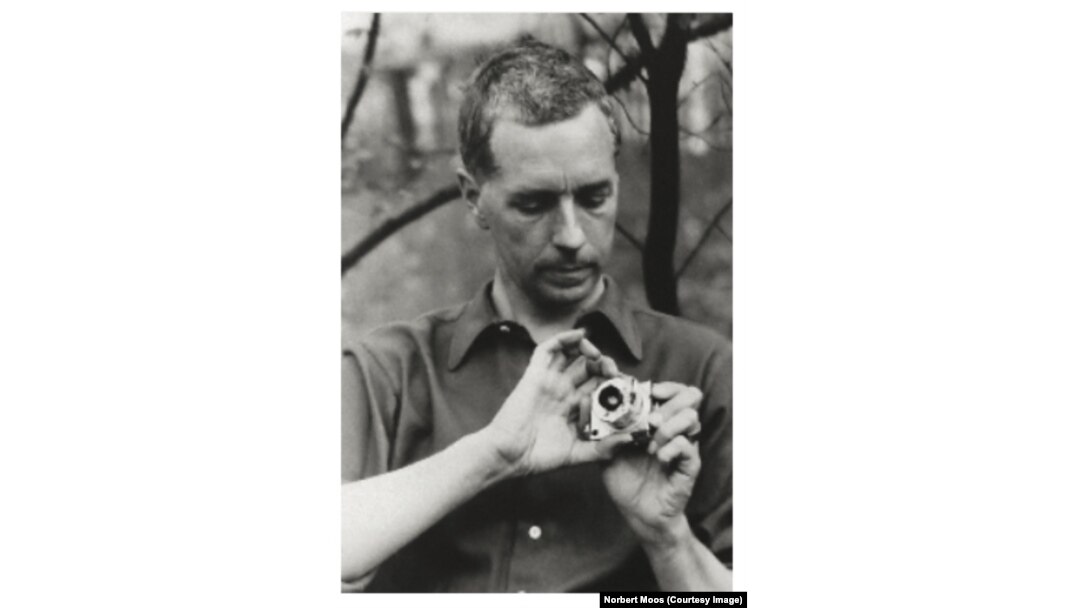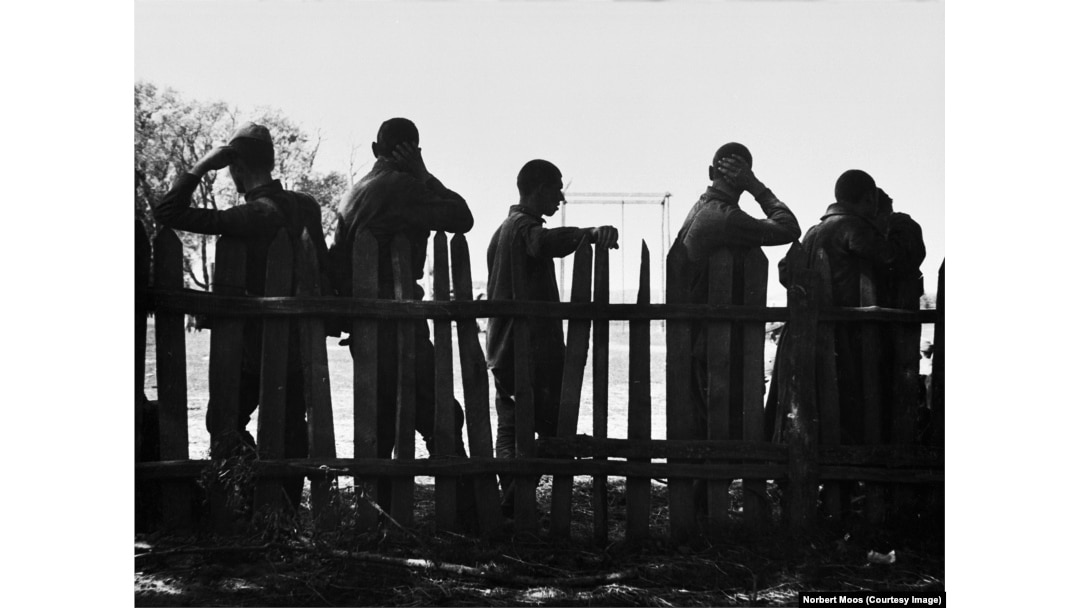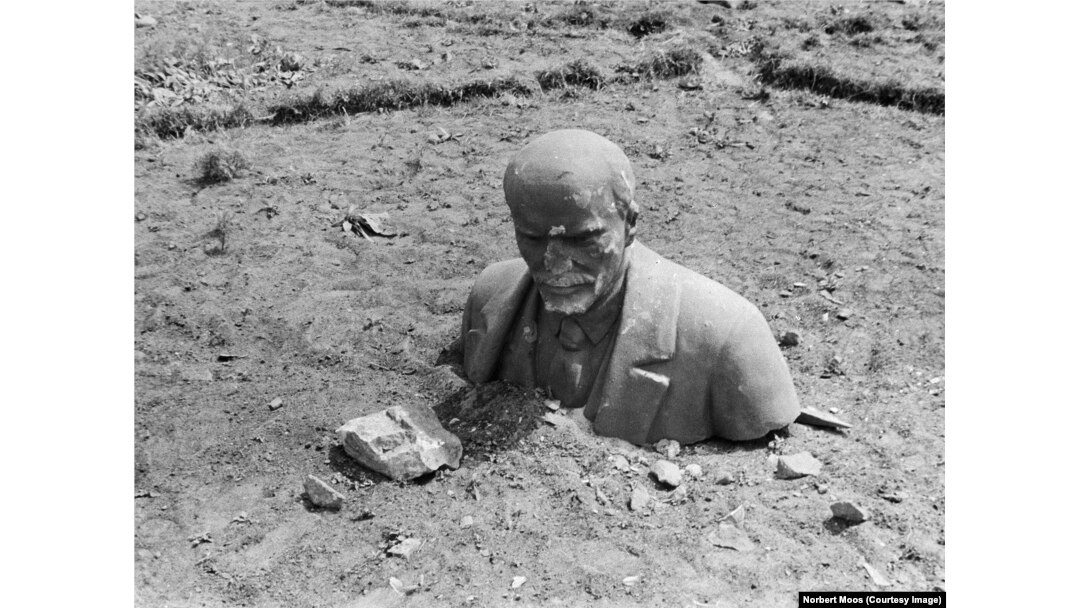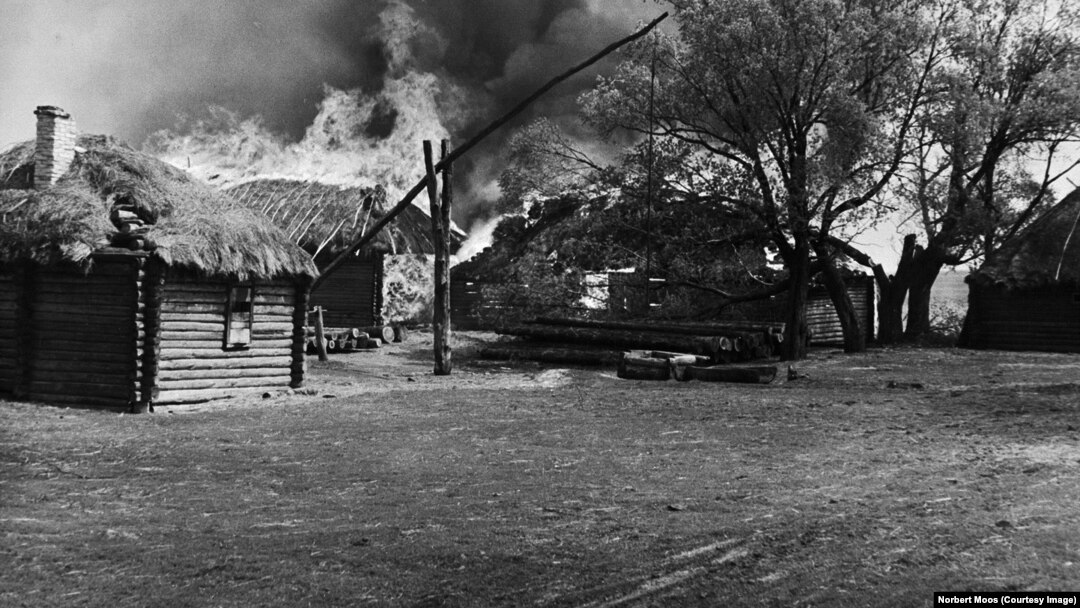In the summer of 1941, Dieter Keller was one of millions of Nazi soldiers who stormed into the Soviet Union in the invasion dubbed Operation Barbarossa.

Keller (above) survived the war and eventually returned to civilian life with a smuggled collection of photographs of the atrocities he witnessed.

Those images remained secret until long after Keller’s death.
In 2010, a collector heard about and arranged to buy 201 photographs that had initially been sold by Keller’s daughter to an art gallery. The images were recently made into a book, The Eye Of War, by a small German publishing house.

None of the photos has caption details*, but couple Ana Druga and Thomas Gust, who published the book, told RFE/RL that Keller was stationed in the border areas of what are now Ukraine and Belarus.
The couple says Keller is believed to have fallen in love with a local woman who worked as a translator for the Nazis in Ukraine.
This dangerous affair with the translator may explain how he acquired the Soviet-made camera and film that he used to make his illicit pictures. Photographing frontline Nazi “operations” was forbidden.
Keller used a 35mm FED camera (pictured) made in the Ukrainian Soviet Socialist Republic and named after Feliks Dzerzhinsky. “Iron Feliks” was the communist official who led the murderous secret police force, the Cheka, that would later become the KGB.
Some Ukrainians initially welcomed the Nazi invaders. After the Holodomor, in which Soviet dictator Josef Stalin and communist bureaucrats engineered a famine that killed millions of Ukrainians in the early 1930s, some believed the enemy of their enemy was a friend.
But the nightmarish reality was that the Nazis planned to kill most Slavic people in Europe and replace them with “racially superior” settlers.
Many of Keller’s photographs are too graphic to publish here but show a fascination with death and carnage and an aesthetic that is chilling in its artfulness.
With the only source of information about Keller’s life being his daughter, it’s impossible to say with certainty what his wartime tasks were or whether he was involved in the atrocities he documented, but she says his military role was administrative.
Gust says before the war Keller was involved in subtle resistance to the Nazi regime “for as long as he could be while living in a dictatorship."
Gust says Keller arranged underground meetings in the 1930s between art collectors and some of the largely Jewish artists whose work was then banned. Gust believes that “this would have been enough for him to have been sent to a concentration camp for sure.”
After the war, Gust says Keller spent years searching for the translator he fell in love with.
“He looked for her for a long while because it was a big loss for him, but he never found her again,” Gust says.
Keller died in Stuttgart in 1985 at the age of 76 of complications from Parkinson’s disease.


